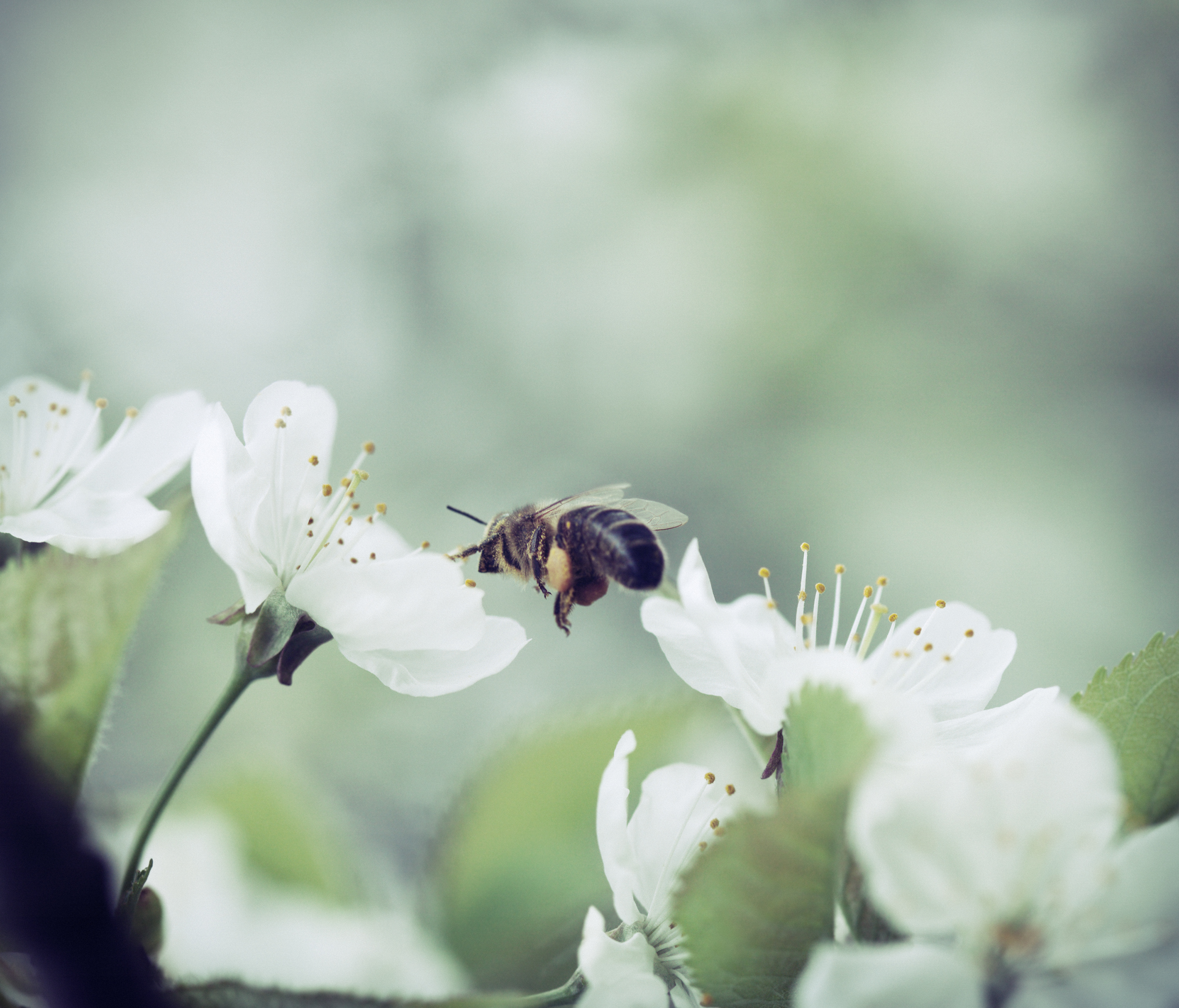A “Bee-ginners” Guide to the Pollinator Pathway
 This fall I helped my grandparents plant a pollinator garden in the backyard of their new home in southwestern Connecticut. Being British, my grandparents are avid gardeners, but this was their first effort at planting a garden specifically to benefit pollinators. We selected plants such as Milkweed, Black-eyed Susan, New England Aster, and Mountain Mint. These flowering perennials are not only beautiful, but they provide habitat and nutrition to pollinators such as bees, butterflies, moths, beetles and birds.
This fall I helped my grandparents plant a pollinator garden in the backyard of their new home in southwestern Connecticut. Being British, my grandparents are avid gardeners, but this was their first effort at planting a garden specifically to benefit pollinators. We selected plants such as Milkweed, Black-eyed Susan, New England Aster, and Mountain Mint. These flowering perennials are not only beautiful, but they provide habitat and nutrition to pollinators such as bees, butterflies, moths, beetles and birds.
Pollinators are important because they move pollen from one plant to another, which enables the process of cross-fertilization— the key to the reproduction of plants. Pollination is responsible for 35% of our food sources. Without pollinators we could not survive. Unfortunately, societal demand for open manicured lawns degrades or eliminates pollinator habitat. Use of petroleum-based fertilizers and dangerous synthetic compounds in the form of commercial pesticides have resulted in a significant decline in pollinator populations, especially bees. These chemicals are also dangerous to birds, resulting in the death of an estimated 7 million birds each year. According to a recent study by Cornell University, the grassland bird population has declined by 53% and breeding adults are down a staggering 3 billion since 1970, suggesting that the “very fabric of the North American ecosystem is unravelling” (https://www.birds.cornell.edu/home/bring-birds-back).
Birds are not the only casualties, the honey bee population in North American has been decimated in a phenomena called colony collapse disorder. These declines are linked to habitat destruction and a class of toxic chemicals, called neonicotinoids, that are commonly found in weed killer available to consumers at the local hardware store. Under President Obama, environmentalists managed to pass a law banning use of neonicotinoid pesticides on wildlife refuges; but recently, the Trump administration lifted the ban on these toxins and other pesticides linked to the decline of birds and pollinators. Now vast swatches of protected land, nearly 150 million acres, could potentially be sprayed (https://www.theguardian.com/environment/2018/aug/04/trump-administration-lifts-ban-on-pesticides-linked-to-declining-bee-numbers).
What You Can Do To Help: Plant a Pollinator Garden
The most basic thing you can do to help prevent this crisis is help provide habitat to pollinators by planting a pollinator garden or by allowing part of your lawn to revert to wild. In order to attract pollinators to your lawn, use a variety of native plants in your garden. Native plants are vital the health and wellbeing of pollinators because insects are highly specialized to feed on only native species. To certain pollinators, non-native and exotic ornamental plants might as well be plastic or artificial because they have not evolved in tandem with the insects. For example, native oak trees can support over 500 species of caterpillar whereas the ornamental ginko tree can only support five (https://www.audubon.org/content/why-native-plants-matter). When selecting perennials, be sure to include plants for both feeding and breeding. For example, the beautiful monarch butterfly loves to feed from a variety of colorful sweet flowers, but it lays its eggs ONLY on milkweed because monarch larvae are highly specialized to feed solely on this plant. Important perennials for the northeastern United States might include: Anise Hyssop, Black-eyed Susan, Blazing Star, Milkweed, Cardinal Flower, Mountain Mint, New England Aster, Violet, Wood Geranium. Important trees might include: Black Cherry, American Basswood, Crabapple, Red Maple, River Birch, White Oak. And other important plants might include: Dandelion, Dill, Catmint, Fennel, Lavender, Mint, Marigold, Parsley, Thyme, Sage, Clover, and Zinnia.
If you are not interested in gardening, you could also help pollinators by allowing parts of your lawn to go wild; mow less frequently allowing the grass to grow taller, or allow leaves, twigs and other shelter to collect on your lawn. Whatever you decide, NEVER use broad spectrum pesticides on your lawn. When these danger chemicals leach into our ground water, we drink it. Medical studies reveal that neonicotinoids are highly toxic to humans, especially children. If you need to use products, research organic options such as the products at www.JohnathanGreen.com, but read labels carefully. Companies often like to label themselves “organic” even when they are not. Of course, nothing beats planting native plants already adapted to thrive under existing conditions of sunlight and water.
In support of our local pollinators, The Global Preservation Society recently awarded a $1,000 grant to the Weston Garden Club Pollinator Pathway Project which will be used to establish a pollinator garden at our local elementary school. You can help by donating to GPS or by donating directly to www.westongardenclub.com or www.pollinator-pathway.org. You can also join the Aspetuck Land trust, or a land trust organization in your area, to support the pollinator pathway effort.
About Global Preservation Society
Located in Weston, CT The Global Preservation Society is a 501(c)(3) tax-exempt nonprofit organization which strives to foster a transnational dialogue among young leaders on the topic of sustainability and environmental stewardship to help guide communities toward a sustainable path
We are inspired by the Sustainable Develop Goals (SDGs) set forth by the United Nations, and the concept of global citizenship – the idea that there is one planet to which we are all connected; and thus, all people have a civic duty to care for each other and the planet. If you would like more information please send us an email!
